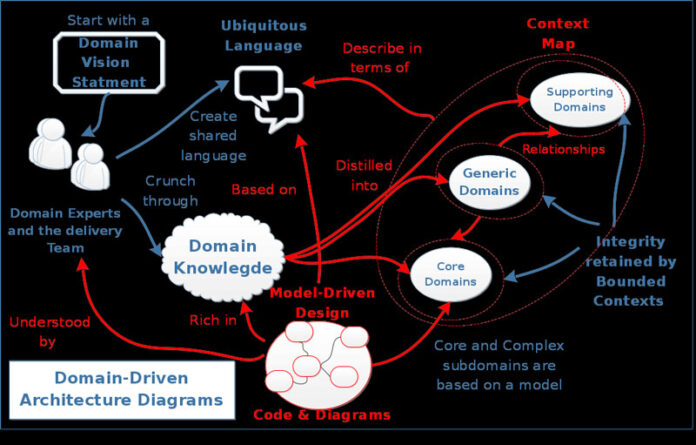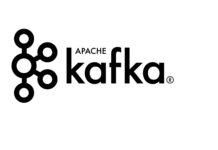Domain-Driven Design (DDD) is an approach to software development that focuses on understanding and modeling the core domain of a business or application. It provides a set of principles and patterns for designing complex software systems that align closely with the underlying domain and its business requirements.
At its core, DDD emphasizes close collaboration and communication between domain experts (typically business stakeholders or subject matter experts) and software developers. The goal is to create a shared understanding of the domain and use that understanding to drive the design and implementation of the software.
Key concepts and principles in Domain-Driven Design include:
- Ubiquitous Language: DDD promotes the use of a common, shared language used consistently by domain experts and developers. This language forms the basis for effective communication and ensures that everyone involved clearly understands the concepts and terminology used within the domain.
- Bounded Contexts: A bounded context is a specific domain area with its own well-defined boundaries. DDD encourages breaking down complex domains into smaller, more manageable bounded contexts, each with its own models and language. This helps to maintain clarity and separation of concerns within the software system.
- Aggregates: Aggregates are clusters of related objects treated as a single unit. They encapsulate business rules and ensure consistency and integrity within the domain. Aggregates define transactional boundaries and provide clear interaction points between the domain and the outside world.
- Domain Events: Domain events represent significant changes or occurrences within the domain. They capture and communicate important information about the system’s state and trigger subsequent actions or processes.
- Domain Services: Domain services encapsulate domain-specific logic that doesn’t naturally fit within a specific entity or value object. They provide cohesive operations and actions that are part of the domain’s behavior but are not tied to a particular entity.
- Value Objects: Value objects represent concepts within the domain considered values, meaning they are immutable and can be compared based on their properties. They are typically used to model characteristics or attributes of entities.
- Domain-Driven Design Patterns: DDD provides various design patterns and techniques, such as Repository, Factory, Specification, and others, to address common design challenges in complex domains.
By applying Domain-Driven Design principles, developers can create software systems that accurately reflect the business requirements, are easier to understand and maintain, and evolve more effectively over time as the domain and its needs change.
Here are some commonly used DDD patterns:
- Repository Pattern: The Repository pattern provides an abstraction for accessing and managing domain objects. It encapsulates the logic for data retrieval, persistence, and querying, allowing the domain model to remain decoupled from the underlying data access technology.
- Factory Pattern: The Factory pattern creates instances of complex domain objects. It encapsulates the creation logic and provides a consistent way to construct objects, ensuring proper initialization and encapsulation of creation details.
- Aggregate Pattern: The Aggregate pattern defines a cluster of closely related domain objects treated as a single unit. Aggregates enforce consistency and transactional boundaries within the domain. They ensure that all changes to the objects within the aggregate are consistent and atomic.
- Value Object Pattern: The Value Object pattern represents an immutable object that contains attributes or properties. Value objects are used to model concepts in the domain that are considered values and compared based on their properties rather than their identity.
- Domain Event Pattern: The Domain Event pattern is used to model and handle significant changes or occurrences within the domain. Domain events capture and communicate important information about the system’s state and can trigger subsequent actions or processes.
- Specification Pattern: The Specification pattern provides a way to encapsulate business rules or criteria that can be used for querying or filtering domain objects. Specifications separate the query logic from the client code and allow for reusable and composable criteria.
- Domain Services: Domain services encapsulate domain-specific logic that doesn’t naturally fit within a specific entity or value object. They provide cohesive operations and actions that are part of the domain’s behavior but are not tied to a particular object.
These are just a few examples of DDD patterns, and several others address different aspects of domain modeling and system design. The patterns help developers apply DDD principles effectively and create software systems that are more maintainable, flexible, and aligned with the domain’s complexities and requirements.









